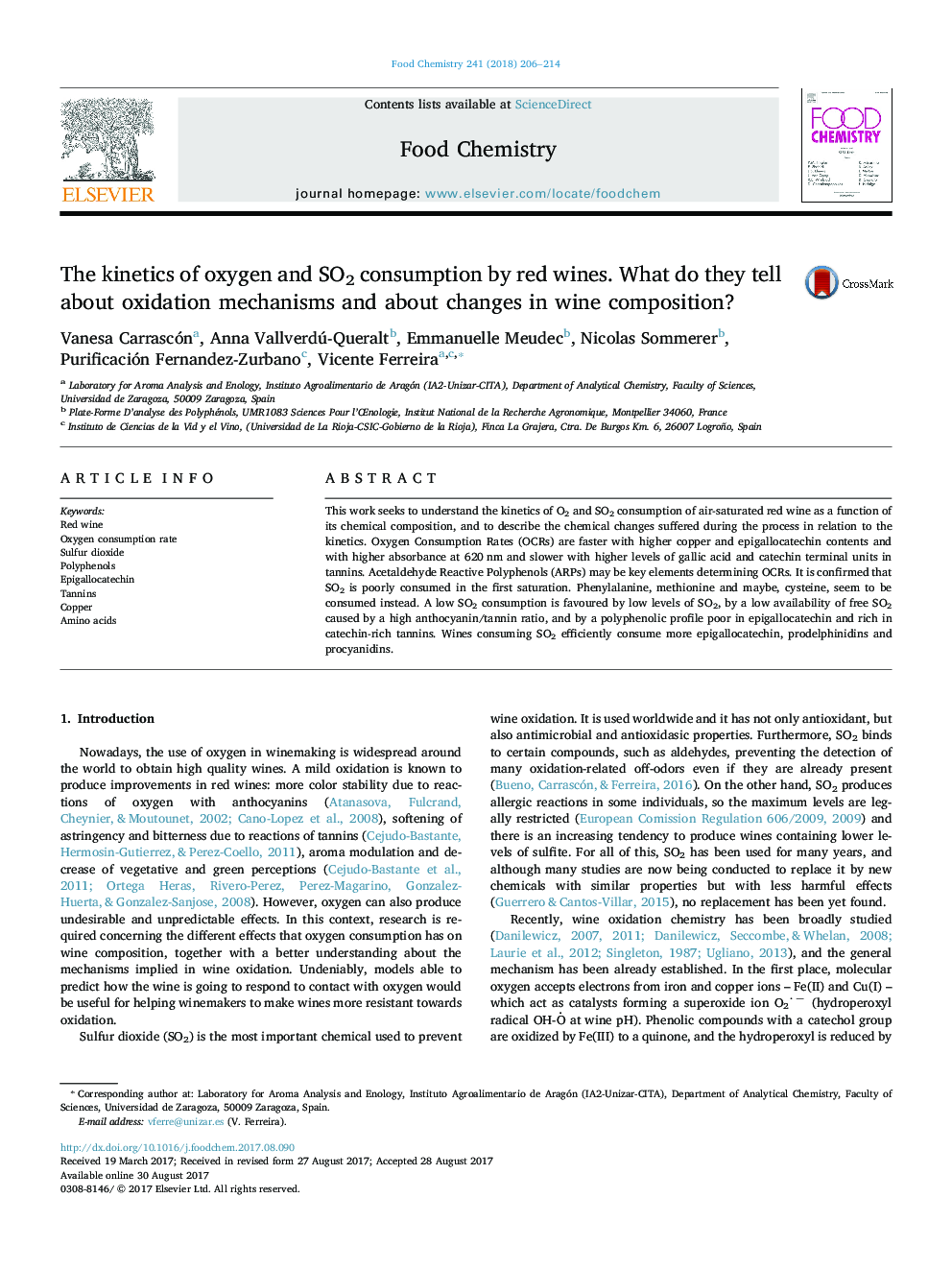| Article ID | Journal | Published Year | Pages | File Type |
|---|---|---|---|---|
| 5133063 | Food Chemistry | 2018 | 9 Pages |
â¢Wine Oxygen Consumption Rates (OCRs) perfectly modeled from chemical composition.â¢OCRs increase with Cu, epigallocatechin and A620, decrease with gallic acid.â¢Acetaldehyde Reactive Polyphenols (ARPs) maybe key determining OCRs.â¢SO2 consumption related to epigallocatechin and to anthocyanin/tannin ratio.â¢Poor SO2 consumers degrade amino acids and oxidize methionine into its sulfone.
This work seeks to understand the kinetics of O2 and SO2 consumption of air-saturated red wine as a function of its chemical composition, and to describe the chemical changes suffered during the process in relation to the kinetics. Oxygen Consumption Rates (OCRs) are faster with higher copper and epigallocatechin contents and with higher absorbance at 620Â nm and slower with higher levels of gallic acid and catechin terminal units in tannins. Acetaldehyde Reactive Polyphenols (ARPs) may be key elements determining OCRs. It is confirmed that SO2 is poorly consumed in the first saturation. Phenylalanine, methionine and maybe, cysteine, seem to be consumed instead. A low SO2 consumption is favoured by low levels of SO2, by a low availability of free SO2 caused by a high anthocyanin/tannin ratio, and by a polyphenolic profile poor in epigallocatechin and rich in catechin-rich tannins. Wines consuming SO2 efficiently consume more epigallocatechin, prodelphinidins and procyanidins.
